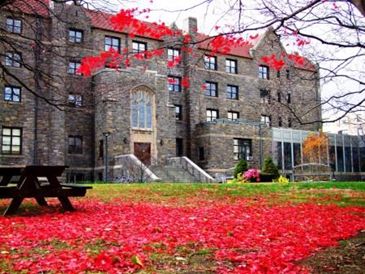Feature photo credit: Pace Law School
-Jenika Heim, EducationUSA Advisor in Canada
In 2013-14, 28,304 Canadians studied in the United States (iie.org), making Canada the 5th largest sender of students to the U.S. The United States is a very popular study destination for a variety of reasons, including, the reputation of world renowned universities, scholarships (especially for athletics), tuition reductions for Canadians, proximity, and specialty programs (like design or film). If you have begun to research U.S. universities, you may be a bit overwhelmed with the number of choices (over 4,700 universities and colleges) and the overall admissions process. The following should help demystify the process of pursuing higher education in the United States.
University vs. College vs. Institute
In Canada, universities grant Bachelor’s, Master’s, and PhD degrees and colleges grant certificates or diplomas, either for transfer into university or for completion of a technical program. This is different in the United States. The term university is usually used for institutions that grant Bachelor’s, Master’s, and PhD degrees. The term college can be used in multiple ways. (1) Colleges usually are four-year institutions that grant Bachelor’s degrees, but may not have Master’s or PhD programs available. (2) A subset of a university is often referred to as a college, like the College of Engineering. (3) “Dude, I totally can’t wait to go to college!” Students usually refer to the general university experience as “going to college.” In the United States, 2-year or technical colleges are called community colleges or junior colleges.
Institutes are schools that specialized in a specific area of study, usually technology, art, or design. Many institutes have Bachelor’s, Master’s, and PhD programs (like MIT). Because of the very specific nature of programming at an institute, you are less likely to receive the “liberal arts” curriculum that is standard at most universities and colleges.
A public university campus. Photo credit: PC: University of Arizona Marketing Communications & Brand Management
Public vs. Private
In the United States, public universities and all community colleges are subsidized by the state they are in (through taxes), making the cost of tuition lower for the residents of these states. Tuition is usually tiered with in-state residents paying the least, out-of-state Americans in the middle, and international students paying the most. Public universities vary in the rigor of their academic programs, with some considered among the best universities in the world (For example, University of California, Berkeley). Generally, public universities have large student bodies with upwards of 20,000 students, including graduate and PhD level programs. Public universities usually follow the below name structure:
University of [state], [city]
University of Illinois, Chicago
[state/city] State University
Minot State University
Private universities are primarily funded by endowments, tuition, grants, and private donations. Because of this, they do not have differing tuition for American students living in or out of state, but will still usually have higher rates for international students. However, private universities will typically have more funding available in scholarships for international students. The 8 well-known “Ivy League” universities on the East Coast of the United States (named after their athletic league) are all private institutions.
A private college campus nestled at the end of a residential block. Photo credit: Green Mountain Communication Department
Which type of institution do you want to go to?
Use the Collegeboard.org Big Future search to help you narrow down your choices. If you need help whittling down your list, check out the EducationUSA Canada website, , follow us on Twitter, Like us on Facebook, contact your EducationUSA advisor at [email protected], or set-up a free 1:1 advising appointment today.



